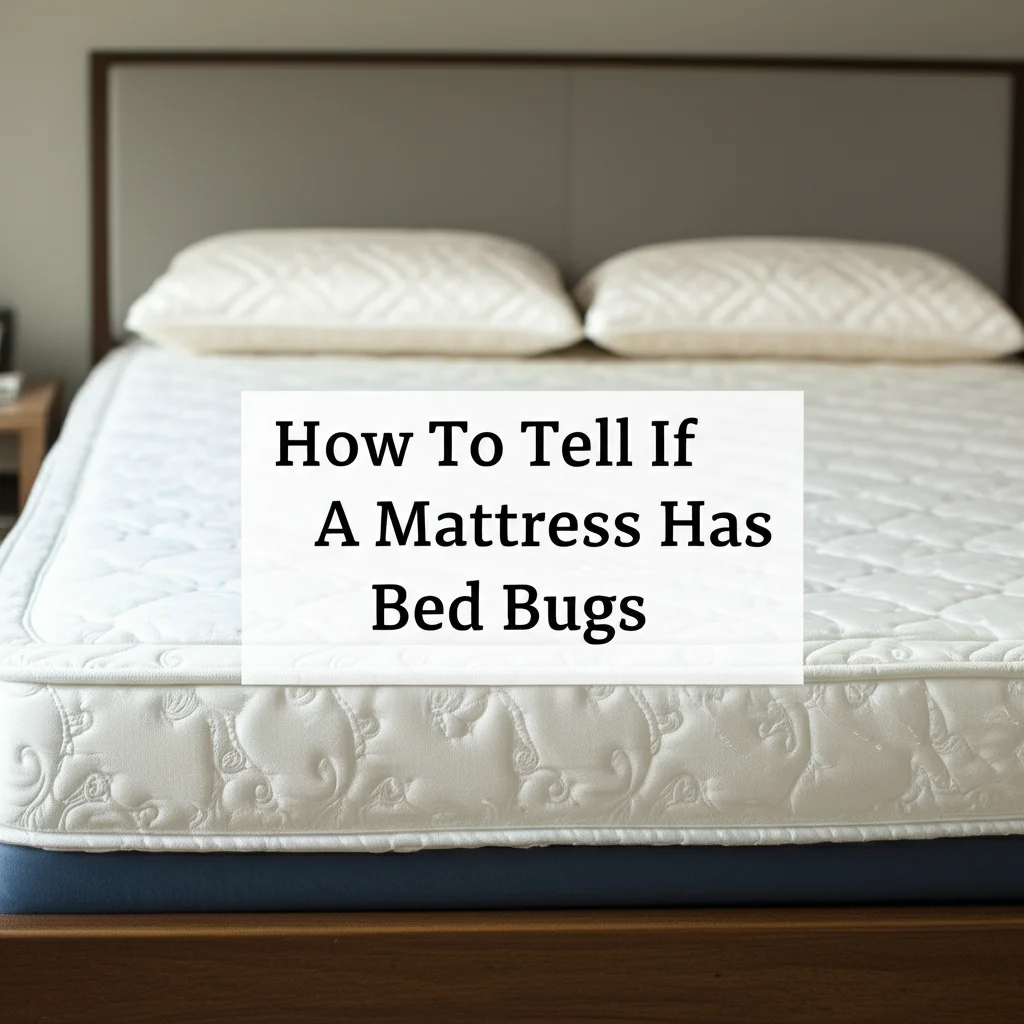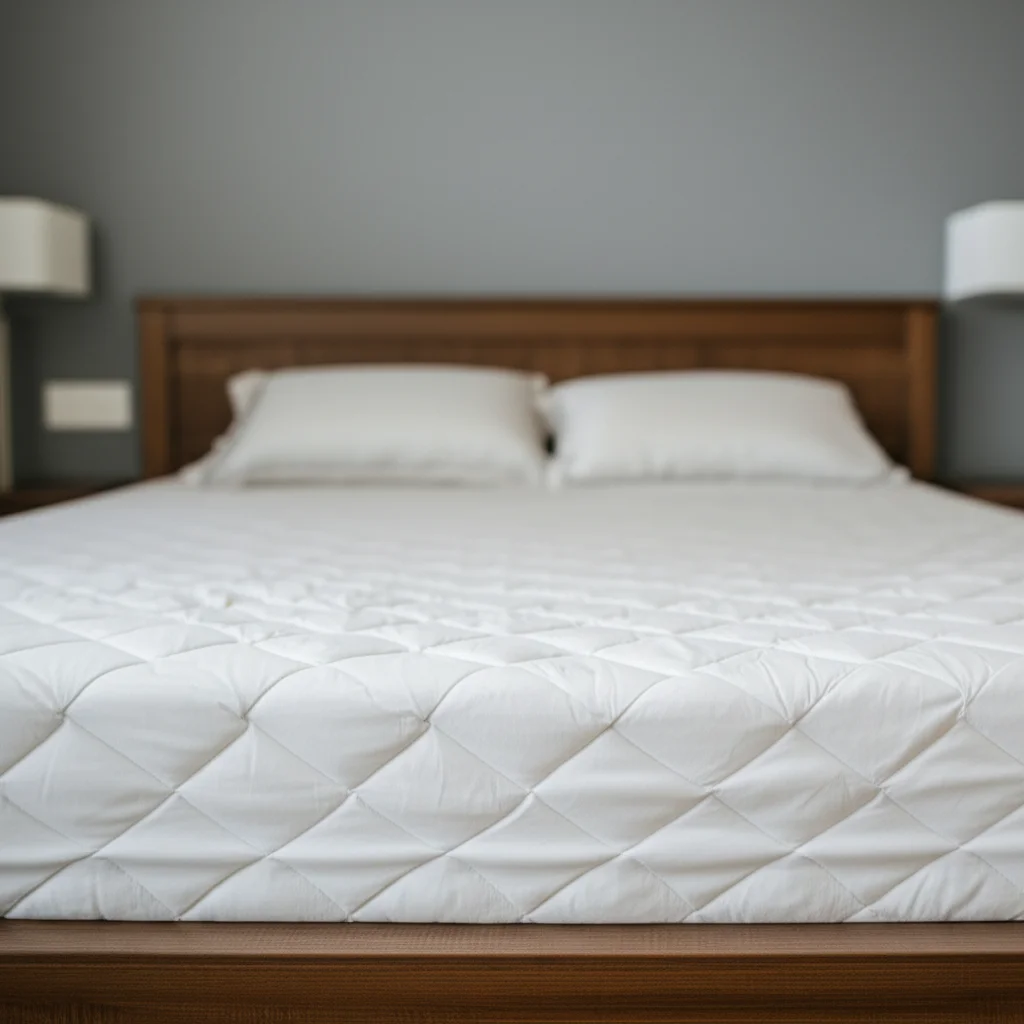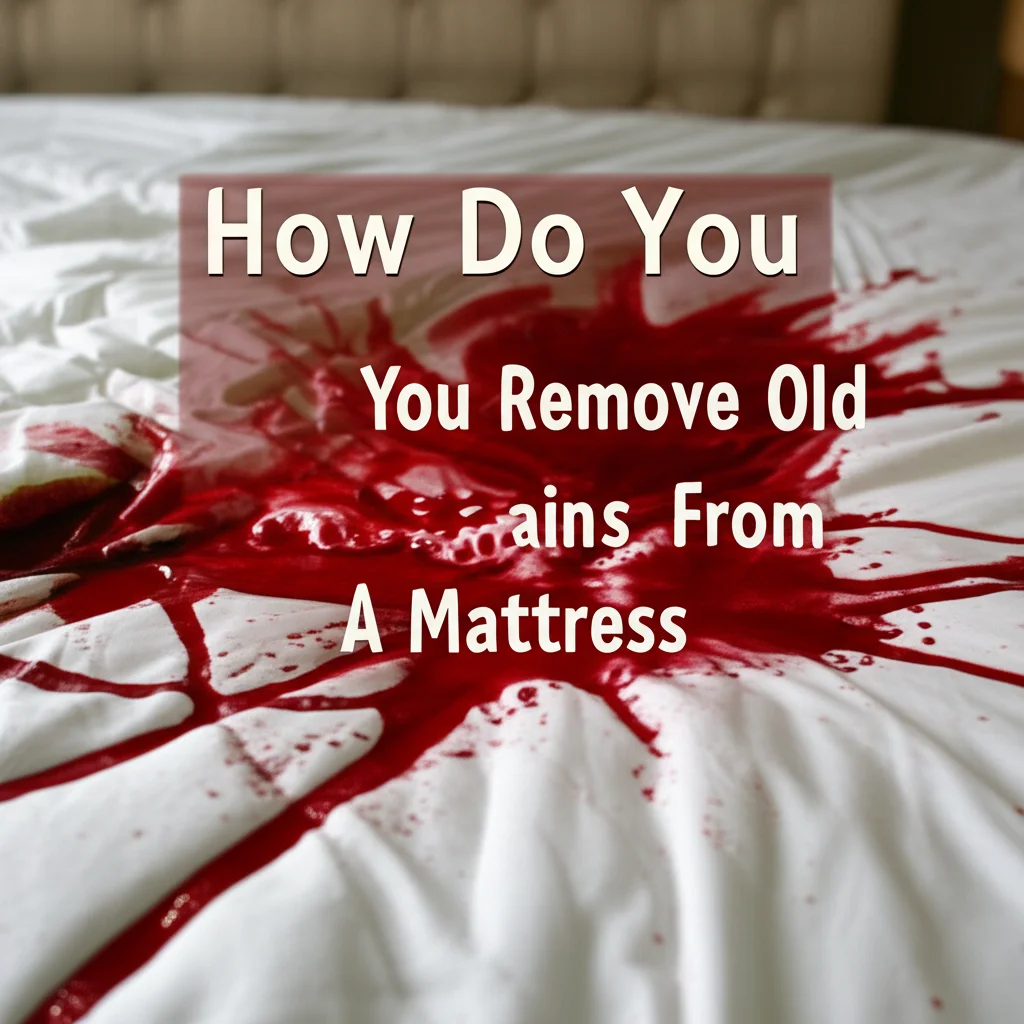· Kianna Connelly · Pest Management · 10 min read
How To Tell If A Mattress Has Bed Bugs

Spotting Bed Bugs: How To Tell If Your Mattress Has Them
Waking up with itchy red welts can be unsettling. Many wonder, “how to tell if a mattress has bed bugs?” These tiny pests hide well, making detection a challenge. Knowing the signs helps you act quickly. This guide helps you identify bed bugs on your mattress. We discuss common hiding spots and visual clues. You will learn to conduct a thorough inspection.
You deserve a peaceful night’s sleep. Discovering bed bugs can feel like a nightmare. Identifying them early prevents a bigger problem. We cover everything from bite marks to tiny black spots. This article gives you the knowledge to protect your home. Let’s find out if your mattress shares space with unwanted guests.
Takeaway
- Look for small, reddish-brown stains or tiny black spots on mattress seams and sheets.
- Inspect mattress crevices, piping, and underneath for live bed bugs or shed skins.
- Check for itchy red welts on your skin, especially those appearing in lines or clusters.
- Use a flashlight and magnifying glass for a close, detailed examination.
- Consider professional help if signs of infestation are clear or widespread.
A Concise Answer
To tell if a mattress has bed bugs, look for small, reddish-brown stains, tiny black fecal spots, or shed skins on seams and sheets. Check for live, flat, apple-seed-sized bugs in mattress crevices. Also, itchy, red bite marks on your skin, often in lines, suggest their presence.
Understanding Bed Bugs: What Are They?
Bed bugs are small, nocturnal insects. They feed on human blood. These pests are about the size of an apple seed. They have a flat, oval body. After feeding, their bodies become swollen and reddish. Bed bugs move quickly across surfaces.
Bed bugs do not fly or jump. They crawl from place to place. They often hitchhike on luggage, clothing, or used furniture. This makes them easy to spread. They can infest homes, hotels, and apartments. Learning about these bugs is the first step in finding them.
Their name comes from their preferred habitat. They like to live in beds and mattresses. They also hide in cracks and crevices near sleeping areas. Bed bugs are a nuisance, but they do not transmit diseases. Their bites can cause itching and skin irritation. Early detection prevents a larger infestation. Knowing what you are looking for is important.
Visual Signs of Bed Bugs on Your Mattress
Identifying bed bugs often starts with visual cues. These bugs leave clear signs on your mattress. You should look for actual insects. Adult bed bugs are small, flat, and oval-shaped. They are reddish-brown. Young bed bugs, called nymphs, are smaller and translucent. They may be harder to see.
Bed bugs also leave behind tiny, discarded skins. These are their exoskeletons. Bed bugs shed their skin as they grow. These empty shells look like the bugs themselves. They are pale, yellowish, and hollow. You often find these skins near their hiding spots. Check along mattress seams and piping.
Another strong sign is the presence of bed bug eggs. These eggs are tiny, white, and oval-shaped. They are about the size of a pinhead. Eggs are often found in clusters. They stick to surfaces, making them hard to remove. You will see them in mattress folds or cracks. Finding eggs confirms active breeding. This means you have an ongoing infestation.
Identifying Bed Bug Droppings and Blood Stains
Bed bugs leave behind distinct marks. These marks serve as important clues. One common sign is tiny, black spots. These are bed bug fecal droppings. They look like specks of ground pepper. You will find them on your mattress, sheets, or bed frame. These spots are digested blood. If you wipe them with a wet cloth, they will smear. This helps confirm they are not just dirt.
You might also find small blood stains. These often appear on your sheets or pillowcases. These stains happen when a feeding bed bug is crushed. This can happen if you roll over in your sleep. The blood spots are usually reddish-brown. They can be very small. Sometimes, these spots are just drops from a bite.
These blood stains and fecal spots are key indicators. They tell you that bed bugs are actively feeding. I remember once seeing these tiny spots and dismissing them as dirt. A closer look, and a wet cloth test, quickly changed my mind. Always check the corners and edges of your mattress. Look at the seams and under any buttons. These are prime areas for such signs. These visual clues are crucial in knowing how to tell if a mattress has bed bugs. If you find stains, it is wise to learn how to clean bed stains or how to clean stains from a mattress as a follow-up action.
Uncovering Hidden Bed Bug Hiding Spots
Bed bugs are masters of hiding. They prefer dark, secluded areas. Your mattress offers many such spots. The seams and piping are favorite places. Carefully inspect all edges of the mattress. Pull back the piping. Look closely at the fabric folds. These areas provide protection for the bugs.
Do not stop at the mattress surface. Lift your mattress off the bed frame. Check underneath the mattress. Bed bugs can hide in the box spring too. Remove the fabric dust cover from the box spring. Inspect the wooden frame. Look for any cracks or crevices in the wood. These tiny gaps are perfect hiding places.
Expand your search beyond the bed itself. Bed bugs often hide within an 8-foot radius of your sleeping area. Check the headboard, especially where it meets the wall. Look behind nightstands and dressers. Inspect baseboards and electrical outlets near the bed. Even loose wallpaper or picture frames can harbor them. A thorough search is key to finding all possible hiding spots. You might also want to check if you have tiny black bugs in bed that are not bed bugs. If you are dealing with other types of furniture, understanding how to clean used furniture to prevent bed bugs is also beneficial.
The All-Important Bed Bug Bite Marks
Bed bug bites are often the first sign people notice. They appear as small, red, itchy welts. These bites are similar to mosquito bites. However, bed bug bites usually have a distinct pattern. They often appear in lines or clusters. This is because bed bugs feed multiple times in one area. They move a short distance, bite again, and repeat.
Bites usually occur on exposed skin. This includes your arms, legs, neck, and face. You might not feel the bite when it happens. The itching often starts later, sometimes hours or even days after. Some people have no reaction to bed bug bites. Others experience severe itching and irritation. I once thought my bites were from mosquitoes until I noticed the pattern.
It is important to remember that bites alone do not confirm bed bugs. Other insects can cause similar marks. Fleas or mosquitoes also bite. However, if you have bites and other visual signs on your mattress, it points to bed bugs. Keep a close eye on new bites. Note their location and pattern. This helps track potential activity.
Using Tools for a Thorough Mattress Inspection
A proper inspection requires a few simple tools. These tools help you see what the naked eye might miss. First, you need a strong flashlight. A bright light helps illuminate dark corners and crevices. Bed bugs prefer darkness. Shining a light directly on potential hiding spots can make them scatter. This reveals their presence.
Second, a magnifying glass is very useful. Bed bugs are small. Their eggs and nymphs are even smaller. A magnifying glass allows you to see fine details. You can spot tiny bugs, eggs, or fecal spots. This ensures you do not miss any subtle signs. I always keep a small magnifying glass handy for detailed checks.
Consider wearing disposable gloves. This keeps your hands clean. It also prevents spreading anything if you find pests. A stiff brush or a credit card can help. Use it to scrape along seams and cracks. This can dislodge hidden bugs or eggs. Have a clear plastic bag or container ready. If you find a bug, you can capture it. This allows for positive identification. These simple tools improve your chances of a successful inspection.
When to Seek Professional Help for Bed Bugs
Finding bed bugs can be overwhelming. Sometimes, DIY methods are not enough. Knowing when to call a professional pest control service is crucial. If your initial inspection reveals widespread signs, professional help is likely needed. This includes many live bugs, numerous eggs, or stains across a large area. A severe infestation requires expert intervention.
Professional exterminators have specialized tools and knowledge. They can identify the full extent of the infestation. They know where bed bugs hide. They use effective treatments that are not available to consumers. These treatments might include heat treatments or specific chemical applications. These methods often reach areas DIY efforts cannot.
Do not delay seeking help if the problem is significant. Bed bugs reproduce quickly. A small problem can become a big one fast. If you have tried home remedies without success, it is time for experts. They can ensure all bugs are eliminated. This prevents recurrence and brings peace of mind. A clean mattress is essential for good sleep. You can also learn how to deep clean your mattress for general maintenance and post-infestation cleaning.
Frequently Asked Questions
How long do bed bugs live in a mattress?
Bed bugs can live for several months without feeding. They can survive up to a year or even longer in ideal conditions. Their lifespan depends on factors like temperature and food availability. This resilience makes them challenging to eradicate. Regular inspections and quick action are important.
Can you feel bed bugs crawling on you?
Most people do not feel bed bugs crawling or biting. Bed bugs inject an anesthetic when they bite. This numbs the area. It prevents you from feeling the bite itself. You only notice the itchy reaction later. Some people with sensitive skin might feel a slight crawling sensation.
Do bed bugs only live in mattresses?
No, bed bugs do not only live in mattresses. They can hide in many places near where you sleep. This includes bed frames, headboards, nightstands, and even electrical outlets. They also hide in cracks in walls, under loose wallpaper, and behind picture frames. They like any dark, secluded spot.
What do bed bug eggs look like?
Bed bug eggs are tiny, white, and oval-shaped. They are about the size of a pinhead. They are often found in clusters. These eggs are sticky. They firmly attach to surfaces like mattress seams or cracks. They are hard to remove without scraping.
What is the first sign of bed bugs?
Often, the first sign of bed bugs is waking up with itchy red welts. These bites typically appear in lines or small clusters. Other early signs include tiny blood stains on sheets. You might also see small black spots of bed bug fecal matter. These spots resemble ground pepper.
Can bed bugs bite through sheets?
Bed bugs cannot bite through sheets. Their mouthparts are designed to pierce skin directly. They must have direct contact with your skin to feed. They will crawl under your sheets, pajamas, or blankets to reach exposed skin. A mattress encasement can help prevent them from hiding in the mattress.
Conclusion
Knowing how to tell if a mattress has bed bugs is a vital skill. It helps protect your home and your peace of mind. We have explored the crucial signs to look for. These include visible bugs, shed skins, and tiny eggs. We also discussed the tell-tale black fecal spots and blood stains. Recognizing bed bug bite patterns is another key indicator.
A thorough inspection of your mattress and surrounding areas is important. Use tools like a flashlight and magnifying glass to aid your search. Early detection leads to easier treatment. If you find signs of these pests, act quickly. Consider professional pest control if the infestation is severe. Do not let these tiny invaders ruin your sleep. Taking proactive steps ensures a comfortable, bug-free sleeping environment. Your well-being starts with a healthy home.
- bed bug signs
- mattress inspection
- pest identification
- bed bug bites
- how to check for bed bugs
- bed bug infestation
- mattress care





